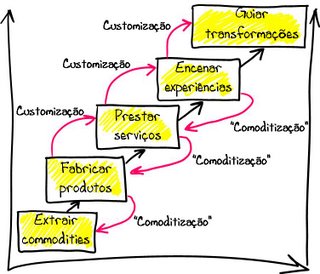Fui buscar o livro "Authenticity" de Gilmore e Pine à estante para procurar a figura 6.1 The Real/Fake Matrix:
Encontrei uns bons pontos sobre o tema aqui, "Authenticity"."TP: Doesn't that make it impossible for a business to figure out how to render itself authentic?JP: No, but it is difficult. You just have to realize that you may be able to render authenticity for some of the people all the time, maybe all of the people some of the time, but never all of the people all of the time."
Recordei este tema ao ler "Feeding the algorithm" de Seth Godin:
"Feeding the algorithm works when you’re the only one doing it. It works when you seek to fit right into the middle of the lane. And it works if you’re willing to outfeed everyone else–at least until the algorithm changes.
...
The alternative is to be uncomfortable. To create remarkable work and leave scale to others. To figure out how to show up in a way that is generous and distinctive, and to refuse the bait that others take when they decide that feeding the algorithm is their best option."

















%2006.21.jpeg)












